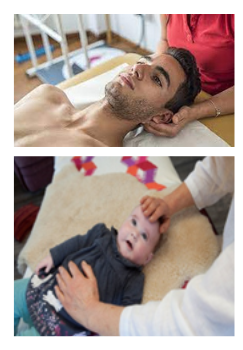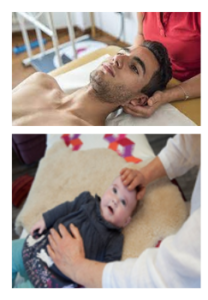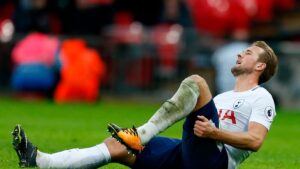A Brief Overview of The Craniosacral System
The cranial system is a semi-closed hydraulic system which consists of four chambers called ventricles within the brain and includes the spinal cord itself. The cranial system contains within it Cerebrospinal Fluid (CSF), contained within a tough, waterproof membrane (the dura mater) which envelopes the brain and spinal cord. An important function of this system is the production, circulation and reabsorption of CSF. This fluid maintains the physiological environment in which your brain and nervous system develop, live and function.

Craniosacral System
The production and reabsorption of CSF within the dura mater produces a continuous rise and fall of fluid pressure within the cranial system causing subtle movements in the cranial bones which are the interfacing connections between these bones. The human skull contains 22 bones, 8 cranial bones and 14 facial bones.

Cranial Sutures
In the past it was believed that these bones fused in early childhood allowing no further movement. However, in recent decades’ numerous studies have proven that there is movement between cranial bones well into adulthood and beyond. Rodgers et al. (1997) concluded that “Anatomic studies on sutural union provide evidence that sutures may not fuse until late in life and perhaps not at all in some cases making it highly improbable that sutures are completely ossified as some authorities have contended”.
Causes and Effects of Cranial Sutural Restriction.
Abnormal cranial bone motion can inhibit volumetric changes. The subsequent buildup of pressure can contribute to dysfunction and ill health, especially in the Central Nervous System which is enclosed within the boundaries of the cranial system. The causes and effects of sutural restriction are many but may include birth strains in infants due to prolonged or difficult labour, assisted birth by means of forceps or vacuum and unusual presentations such as face, brow and breech. Other causes can range from head trauma to hydrocephalus or even grinding of the teeth. The effects of sutural restriction are also wide and varied but can range from headaches, TMJ issues, vision disturbances and even issues affecting the heart, lungs and digestive system. For example, restriction at the base of the skull (occipital atlantal joint) can cause inflammation or impingement of the vagus nerve having far reaching affects including neck pain, blood pressure issues, increases heart rate, nausea, vomiting, stomach pain and bloating (Iron Neck 2021).
What Types of Issues Can Be Treated with Craniosacral Therapy?
Craniosacral therapy involves the entire cranial system and not just the skull, having far reaching effects on the entire body. You do not necessarily have to be sick to benefit from craniosacral therapy and it can be a helpful in relieving stress and maintaining health. However, it is typically used to treat the effects of mild and severe disorders such as:
- Colic.
- Reflux.
- Digestive issues.
- Tension headaches.
- Chronic pain.
- Fibromyalgia.
- Migraine headache.
- Complex regional pain syndrome.
- Fascial adhesions.
- Multiple sclerosis.
- Neuralgia.
- Neurodegenerative diseases.
- Temporo-mandibular joint syndrome.
- Stroke.
- Post-concussion syndrome.
- Speech impairment.
- Epilepsy.
What Should I Expect During Craniosacral Treatment?
The first point I want to make is that Craniosacral therapy (CST) is a very gentle hands-on treatment and can be used to treat all age ranges, from infants to elderly patients. To the observer it may look like very little is happening which can draw some skepticism. However, as a skeptic myself, and a qualified osteopath who is also trained in craniosacral therapy, I can assure you that there is a lot going on that the astute therapist can feel. In some cases, the patient may feel very little and in other cases a sensitive patient may feel noticeable movement and sometimes, intense emotions.
References
Cranial Sutures Available at: https://www.mountsinai.org/health-library/special-topic/cranial-sutures
Craniosacral System Available at: https://www.artofundoing.com/massage-bodywork/craniosacral-therapy-experiences/
Iron Neck (2021) Vagus Nerve and Pain in the Neck: Diagnosis and Treatment. Available at: https://www.iron-neck.com/blogs/news/vagus-nerve-pain (Accessed: 04 May 2022).
Rogers, J. S., & Witt, P. L. (1997). ‘The Controversy of Cranial Bone Motion’. Journal of Orthopaedic & Sports Physical Therapy, 26(2), pp. 95–103.





